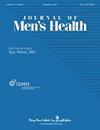高校男子篮球与排球运动员垂直起跳参数的比较研究
IF 0.6
4区 医学
Q4 Medicine
引用次数: 0
摘要
本研究旨在比较大学男子排球与篮球运动员在四种不同的垂直起跳类型中下肢力量的差异。我们从首都体育学院招募了100名二级以上(国家标准以上)男大学生运动员(篮球50名,排球50名)自愿参加。我们评估了每位运动员在深蹲跳(SJ)、反向跳(CMJ)、直腿连续跳(CJs)和屈腿连续跳(CJb)方面的表现。数据分析采用SPSS 25.0版独立样本t检验。软件在CMJ测试中,排球运动员的垂直跳跃位移(VJD)显著高于其他运动员;p = 0.047, t =−2.018),深蹲位移(SD;P = 0.005, t =−2.883)、峰值力(P = 0.023, t =−1.964)和峰值速度(P = 0.011, t =−1.687)均高于篮球运动员。在SJ检验中,排球运动员的VJD (p = 0.041, t = - 1.21)和SD (p = 0.008, t = - 1.46)显著高于篮球运动员。在CJs测试中,排球运动员的平均垂直起跳位移(AVJD;P = 0.042, t =−2.067)高于篮球运动员。在CJb测试中,排球运动员的AVJD (p = 0.001, t =−3.448)、平均深蹲位移(p = 0.017, t =−2.44)和平均接触时间(p = 0.045, t =−2.038)显著高于篮球运动员。大学排球运动员的整体垂直起跳能力优于大学篮球运动员。将CMJ、SJ、cj、CJb训练纳入日常训练,并在篮球、排球运动员的选拔中予以考虑。此外,教练还可以将快缩纤维、预拉伸效果和k作为主要评价指标,来评估日常训练的进度。本文章由计算机程序翻译,如有差异,请以英文原文为准。
A comparative study of vertical jump parameters in men's college basketball and volleyball players
This study aimed to compare lower limb strength disparities between male college volleyball and basketball players in four distinct vertical jump types. We recruited 100 second-level (above the national standard) male college athletes (50 basketball and 50 volleyball players) from Capital University of Physical Education and Sports who volunteered to participate. We assessed the performance of each athlete with regards to the squat jump (SJ), countermovement jump (CMJ), continuous jump with straight legs (CJs), and continuous jump with bent legs (CJb). Data analysis was performed by independent samples t-tests in SPSS version 25.0. software. In the CMJ test, volleyball players had a significantly higher vertical jump displacement (VJD; p = 0.047, t = −2.018), squat displacement (SD; p = 0.005, t = −2.883), peak force (p = 0.023, t = −1.964), and peak velocity (p = 0.011, t = −1.687) than basketball players. In the SJ test, volleyball players had a significantly higher VJD (p = 0.041, t = −1.21) and SD (p = 0.008, t = −1.46) than basketball players. In the CJs test, volleyball players had a significantly higher average vertical jump displacement (AVJD; p = 0.042, t = −2.067) than basketball players. In the CJb test, volleyball players had a significantly higher AVJD (p = 0.001, t = −3.448), average squat displacement (p = 0.017, t = −2.44), and average contact time (p = 0.045, t = −2.038) than basketball players. The overall vertical jump ability of college volleyball players was better than that of college basketball players. CMJ, SJ, CJs and CJb training should be included in daily training sessions and considered in the selection of basketball and volleyball players. In addition, coaches can use fast twitch Fibers, the effect of pre-stretch and k as the main evaluation indicators to assess daily training progress.
求助全文
通过发布文献求助,成功后即可免费获取论文全文。
去求助
来源期刊

Journal of Men's Health
Medicine-Urology
CiteScore
0.70
自引率
28.60%
发文量
153
审稿时长
10 weeks
期刊介绍:
JOMH is an international, peer-reviewed, open access journal. JOMH publishes cutting-edge advances in a wide range of diseases and conditions, including diagnostic procedures, therapeutic management strategies, and innovative clinical research in gender-based biology. It also addresses sexual disparities in health, life expectancy, lifestyle and behaviors and so on. Scientists are encouraged to publish their experimental, theoretical, and descriptive studies and observations in as much detail as possible.
 求助内容:
求助内容: 应助结果提醒方式:
应助结果提醒方式:


